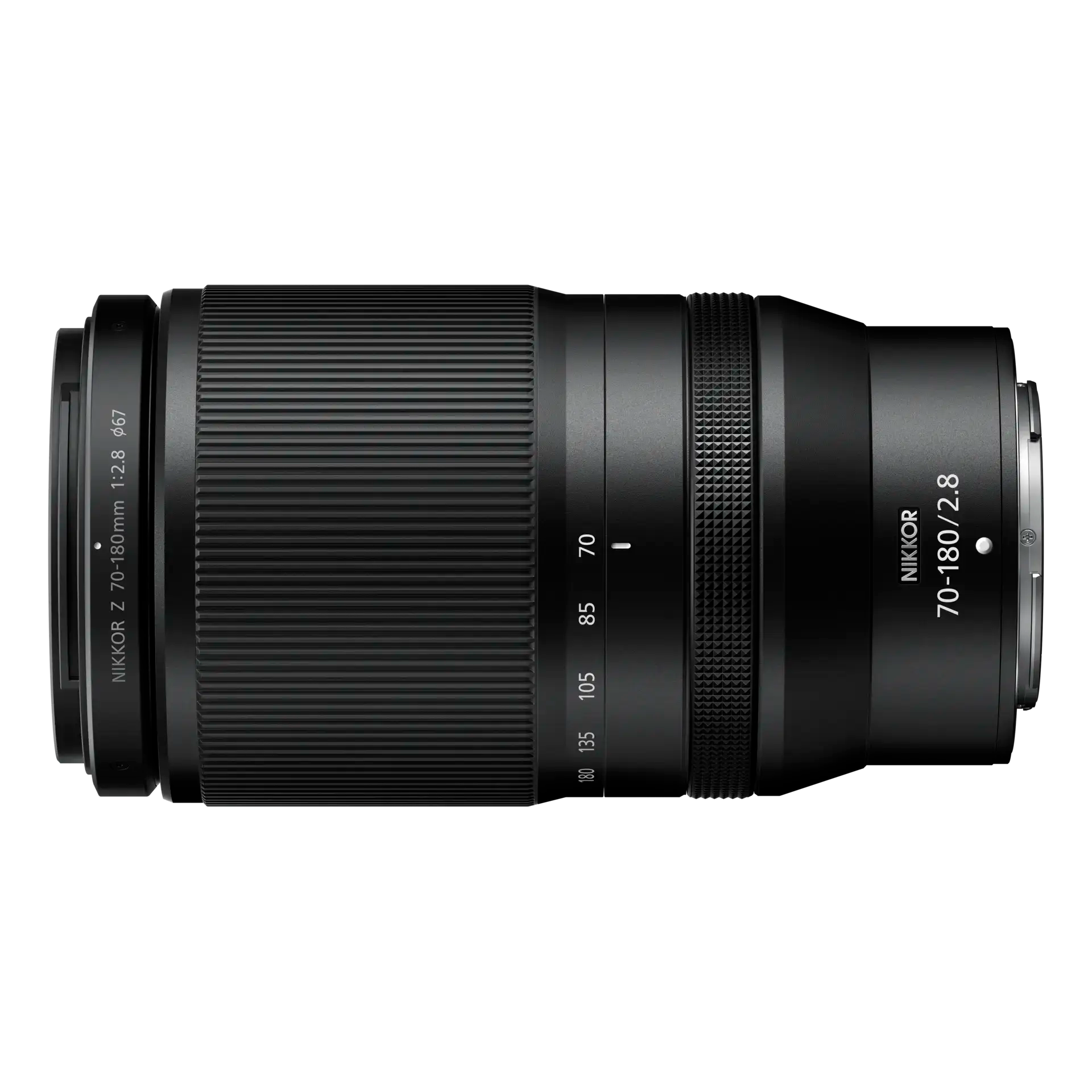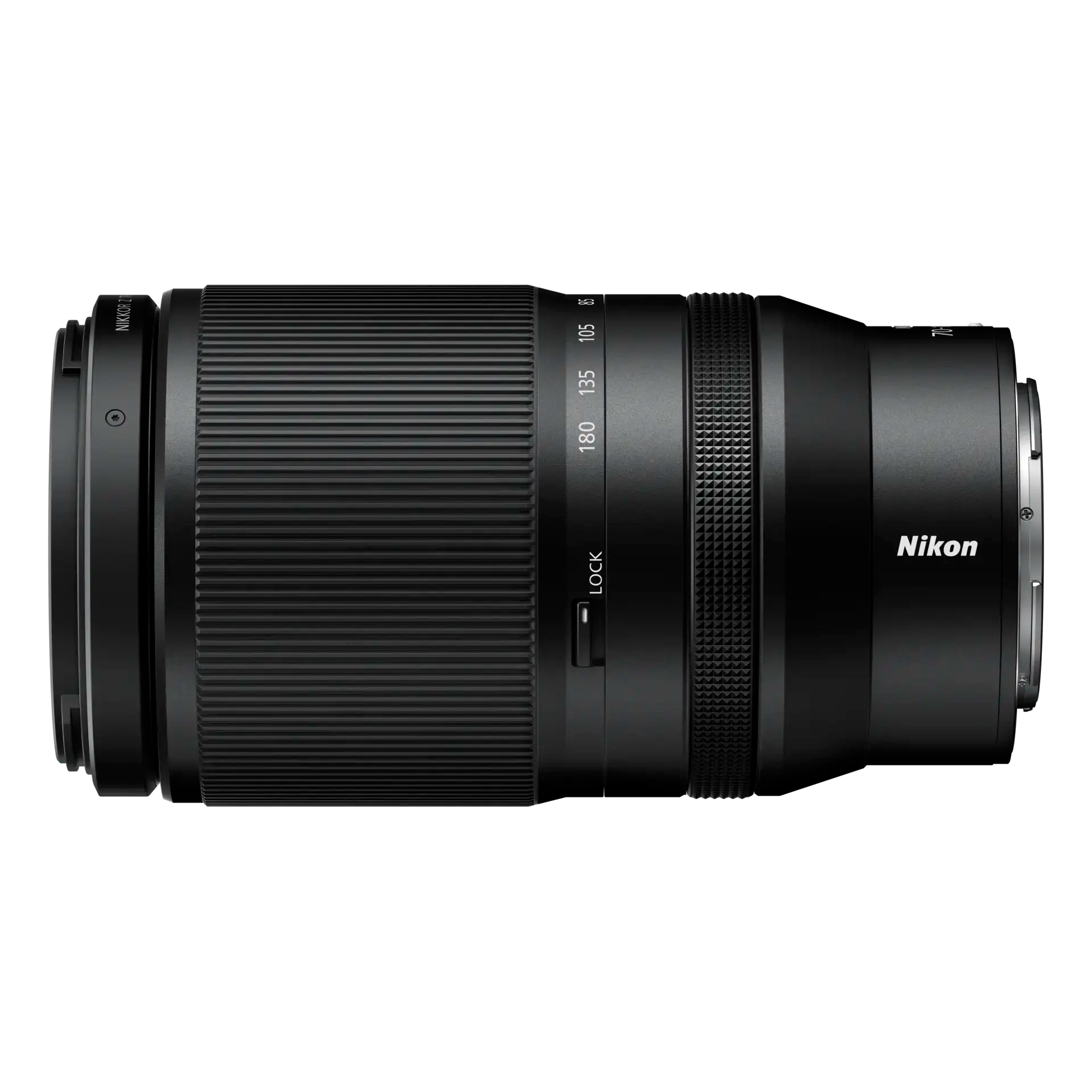Product Description
Nikon NIKKOR Z 70-180mm f/2.8 Lens: Fast Telephoto Zoom for Versatile, High-Performance Shooting
The Nikon NIKKOR Z 70-180mm f/2.8 is a fast telephoto zoom lens designed to offer outstanding performance in a compact, lightweight package, ideal for sports, wildlife, and action photography. This lens features a constant f/2.8 aperture throughout its entire zoom range, making it perfect for low-light situations and for achieving beautiful, shallow depth-of-field effects. Its close-focusing performance and compatibility with Nikon Z teleconverters make it an incredibly versatile option for photographers and videographers who need flexibility without sacrificing image quality.

Compact and Lightweight with Pro-Level Performance
At just a fraction of the weight of other telephoto lenses, the NIKKOR Z 70-180mm f/2.8 lens is designed for photographers on the go. Its lightweight construction makes it ideal for capturing fast-moving subjects in sports, wildlife, or event settings without being weighed down by heavy gear. Whether shooting handheld or from a tripod, the lens’ fast f/2.8 aperture gives you creative control over your exposure, helping you create stunning images in both natural and low-light environments.

Full-Frame Telephoto Zoom with Constant f/2.8 Aperture
The 70-180mm focal range offers a versatile zoom that spans from mid-telephoto to longer telephoto lengths, giving you flexibility to frame your shots perfectly. The constant f/2.8 maximum aperture throughout the zoom range ensures that your exposure remains consistent, whether you’re shooting at 70mm or 180mm. This feature is essential for maintaining a shallow depth of field, which helps to beautifully isolate your subject against softly blurred backgrounds. The f/2.8 aperture also ensures excellent performance in low-light situations, making this lens perfect for indoor sports, wildlife at dawn or dusk, or evening events.

Close-Focusing Capabilities for Creative Flexibility
One of the standout features of the NIKKOR Z 70-180mm f/2.8 is its impressive close-focusing performance. At the 70mm zoom position, the lens can focus as close as 1 inch, allowing you to capture intricate details and small subjects with ease. Even at the 180mm zoom position, the minimum focusing distance is a respectable 2.8 feet, offering excellent flexibility for capturing close-up shots of distant subjects. This versatility makes the lens perfect for nature photography, macro-style shots, or any scenario that requires fine detail capture.

Teleconverter Compatibility for Extended Reach
For photographers looking for even more telephoto reach, the NIKKOR Z 70-180mm f/2.8 is fully compatible with Nikon Z teleconverters. With the 1.4x teleconverter, you can extend your focal length to 252mm, and with the 2x teleconverter, you can achieve a reach of up to 360mm, allowing you to photograph distant subjects such as wildlife, athletes, or outdoor events without losing sharpness or image quality.

Ideal for Both Photography and Videography
In addition to its performance as a still photography lens, the NIKKOR Z 70-180mm f/2.8 excels in video applications. Its focus mechanism is designed to ensure smooth transitions between subjects, helping to create cinematic focus pulls without shifting the angle of view. The quiet autofocus and stable zoom performance make it a great choice for content creators, videographers, and hybrid shooters who need consistent and precise control over their focus and composition.

Key Features of the Nikon NIKKOR Z 70-180mm f/2.8 Lens:
- 70-180mm Telephoto Zoom: Covers a wide range of shooting scenarios from portraits to wildlife.
- Constant f/2.8 Aperture: Offers bright, consistent performance across the entire zoom range, perfect for low-light situations and shallow depth of field.
- Close-Focusing Performance: Focuses as close as 1 inch at 70mm and 2.8 feet at 180mm, great for capturing fine details and small subjects.
- Teleconverter Compatibility: Extend the focal length to 252mm with a 1.4x teleconverter or 360mm with a 2x teleconverter.
- Lightweight and Compact Design: Ideal for photographers who need a portable, high-performance lens for sports, wildlife, and action photography.
- Smooth Focus Transitions for Video: Delivers smooth and silent autofocus performance, making it perfect for video work and still photography alike.

Ergonomics and Portability
Despite its professional-grade performance, the NIKKOR Z 70-180mm f/2.8 remains highly portable. Its compact size and lightweight build make it a great option for photographers and videographers who need a reliable telephoto lens for travel or on-location shoots. The lens design ensures that it fits comfortably into most camera bags, and its lightweight form allows for long shooting sessions without fatigue.
Robust Build and Weather Sealing
Nikon has designed the NIKKOR Z 70-180mm f/2.8 lens to withstand the rigours of outdoor use. While compact and lightweight, it is also durable and weather-sealed, protecting the lens from dust, moisture, and light impacts. This makes it a reliable companion for shooting in a variety of challenging environments, from outdoor sporting events to wildlife adventures in unpredictable weather conditions.
What’s in the Box:
- Nikon NIKKOR Z 70-180mm f/2.8 Lens
- Front and rear lens caps
- Lens hood
- Lens case
Perfect for Sports, Wildlife, and Event Photographers
Whether you’re shooting a fast-paced sports game, capturing wildlife in their natural habitat, or covering events in dimly lit environments, the Nikon NIKKOR Z 70-180mm f/2.8 Lens provides the reach, flexibility, and optical performance you need to get the shot. Its combination of a fast f/2.8 aperture, close-focusing capabilities, and compatibility with teleconverters makes this a highly versatile lens that adapts to a wide range of photographic and video scenarios.
Specifications at a Glance:
- Focal Length: 70-180mm
- Maximum Aperture: f/2.8
- Lens Construction: 19 elements in 14 groups
- Filter Thread: 67mm
- Minimum Focus Distance: 1 inch (70mm), 2.8 feet (180mm)
- Compatible with Nikon Z teleconverters
- Weight: 795g
- Weather Sealing: Yes
Payment & Security
Your payment information is processed securely. We do not store credit card details nor have access to your credit card information.





















